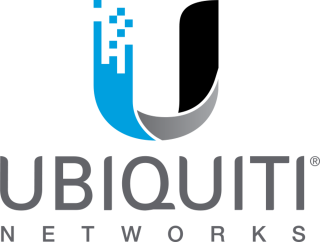In today’s digital age, the integration of artificial intelligence (AI) tools in the workplace, particularly those like ChatGPT, has become a norm rather than an exception. While these tools offer remarkable efficiencies in automating and enhancing various business processes, they also introduce a unique set of challenges concerning chatGPT security. Ensuring the confidentiality of sensitive information and adhering to robust security policies is paramount, as vulnerabilities could lead to significant security risks within an organization. The importance of securing AI technologies cannot be overstated, as they hold the potential to access and process vast amounts of confidential data.
This article will explore the security concerns associated with ChatGPT in the workplace, highlighting the implications for compliance and legal risks, potential cybersecurity threats, and the importance of establishing stringent security policies to mitigate chatgpt security risk. By understanding these aspects, organizations can implement effective mitigation strategies, ensuring not only the confidentiality of their data but also the integrity and reliability of their AI-enhanced operations. As ChatGPT and similar AI tools become increasingly embedded in day-to-day business practices, recognizing and addressing their associated security risks is crucial for maintaining the trust and safety of all stakeholders involved.
Security Concerns with ChatGPT in the Workplace
Data Privacy and Confidentiality
When you integrate ChatGPT into your workplace, one of the primary concerns is the confidentiality of the input data. Unlike a simple search engine query, ChatGPT can process up to 25,000 words per prompt, which significantly increases the risk of exposing sensitive information. All interactions with ChatGPT are logged, and the terms of use allow OpenAI to retain and use this data to improve its services, raising concerns about potential breaches of confidentiality. It’s crucial for your organization to be aware that any data inputted could be accessed by OpenAI staff or subcontractors. Additionally, the handling of personal data by employees must comply with data protection regulations, requiring clear privacy notices and justified processing activities.
Accuracy and Reliability
The reliability of ChatGPT’s responses in professional settings, such as medical or legal fields, poses another significant challenge. Studies have shown that while ChatGPT can provide largely accurate responses to medical queries, there are notable limitations, especially when the questions become more complex. The median accuracy and completeness scores indicate that while ChatGPT often provides useful information, it can fall short of delivering fully accurate and comprehensive answers. This variability in reliability necessitates a cautious approach, emphasizing the need for outputs to be reviewed by professionals with relevant expertise before any critical use.
Bias and Fairness
The issue of bias in AI systems like ChatGPT is a growing concern as these technologies become more prevalent in the workplace. The training data used to develop ChatGPT may reflect existing societal biases, which can inadvertently influence the model’s responses. This can lead to biased decision-making processes, particularly in HR and recruitment. Ensuring fairness in AI involves rigorous evaluation and continuous monitoring to detect and mitigate biases. Strategies such as diversifying training data, implementing robust bias detection techniques, and fostering transparency are critical to addressing these challenges and promoting equitable AI interactions.
By understanding and addressing these security concerns, you can better safeguard your organization against potential risks associated with the use of ChatGPT in the workplace. Implementing comprehensive security policies and ensuring strict compliance with data protection laws are essential steps in mitigating these risks.
Implications for Compliance and Legal Risks
Integrating ChatGPT and similar AI technologies into your workplace involves navigating a complex landscape of compliance and legal risks. These risks span various areas, including regulatory compliance, intellectual property, and liability issues, especially in client-facing roles.
Regulatory Compliance
The use of AI tools like ChatGPT in the workplace raises significant concerns regarding adherence to various regulations. For instance, some jurisdictions require employers to disclose whether AI is used in making employment decisions. Places like New York City go a step further, mandating a “bias audit” before AI can be employed in such capacities. Moreover, compliance with data protection laws such as the GDPR or CCPA is crucial. These regulations mandate robust data handling practices, including obtaining user consent and minimizing data collection. Failure to comply with these regulations can expose your organization to legal penalties and damage your reputation.
Intellectual Property Issues
ChatGPT’s training on extensive online data sets introduces risks related to intellectual property (IP). The AI’s outputs could potentially include or be derived from copyrighted material, leading to inadvertent IP infringements. This is particularly problematic if the AI generates content that closely resembles or duplicates existing protected works, raising challenges in distinguishing between AI-generated and human-authored content. Furthermore, if ChatGPT is used in the creation of new IP, such as designs or text, the ownership of such IP can become a contentious issue, especially since AI cannot legally hold patents or copyrights.
Liability in Client-Facing Work
When ChatGPT is used in client-facing roles, the accuracy of the information it provides is crucial. Misinformation or the inadvertent disclosure of confidential data can lead to significant liability issues. For example, if proprietary company information is leaked during interactions with ChatGPT, it could result in loss of trade secrets or expose the company to legal actions from third parties. Additionally, the use of AI in decision-making processes must be carefully managed to avoid discrimination or bias that could lead to legal liabilities under employment laws.
By understanding these implications, you can better prepare and implement strategies to mitigate the associated risks. Establishing clear policies on AI use, conducting regular audits, and ensuring that all AI-driven activities are in line with legal and regulatory requirements are essential steps in safeguarding your organization.
Potential Cybersecurity Threats
Phishing and Social Engineering
Phishing and social engineering attacks have seen a significant rise in sophistication, largely due to the capabilities provided by AI tools like ChatGPT. These tools enable attackers to craft highly convincing phishing emails that are difficult to distinguish from legitimate communication. For instance, ChatGPT can generate emails that mimic the tone and style of recognized figures or company executives, making them appear credible. This increased believability has led to a notable surge in successful scams and information theft. Additionally, the ability to generate contextually relevant messages means ChatGPT can be weaponized to conduct more effective social engineering attacks, tricking employees into compromising security protocols.
Malware and Ransomware
The development and spread of malware and ransomware have also been enhanced by ChatGPT’s capabilities. Attackers utilize the AI to develop sophisticated malware scripts, including ransomware, which poses significant security threats to enterprises. The ease with which ChatGPT can output computer code in several programming languages allows even those with minimal coding skills to create malicious software. This accessibility reduces the barrier for entry into cybercrime, enabling a broader range of individuals to engage in such activities. The potential for ChatGPT to be misused in developing attack vectors like these highlights the critical need for robust cybersecurity measures.
Misuse by Low-Sophistication Threat Actors
Even threat actors with low technical sophistication are finding ways to leverage AI tools like ChatGPT to amplify their malicious activities. These individuals can use ChatGPT to enhance the effectiveness of their attacks, such as generating convincing phishing emails or creating malware. The tool’s ability to iterate and improve upon the generated content through continuous interaction makes it a potent asset for criminals looking to refine their strategies. The proliferation of open-source variations of large language models further exacerbates this issue, as it provides easy access to powerful AI capabilities without the safeguards implemented by proprietary models. This democratization of AI technology poses significant challenges for cybersecurity, as it equips a wider array of individuals with the means to conduct harmful cyber activities.
Mitigation Strategies for Organizations
Employee Training and Awareness
To bolster your organization’s defenses against ChatGPT security risks, it is essential to prioritize employee training and awareness. Regular training sessions should be conducted to educate your employees about the potential security risks associated with using AI tools like ChatGPT. These sessions should cover topics such as data security, recognizing AI-generated phishing attempts, and understanding the potential misuse of AI in cyber attacks. Promoting a culture of security awareness across the organization is crucial. Every employee should understand their role in protecting sensitive information and identifying potential risks associated with ChatGPT.
Implementing Security Policies
Effective mitigation of ChatGPT security risks requires the implementation of robust security policies. Start by conducting a thorough risk assessment to identify what data ChatGPT will access and the potential threats associated with it. Based on this assessment, develop a detailed security policy that outlines user permissions and authentication methods. It’s also vital to regularly update and patch systems to protect against known vulnerabilities. Establish clear data governance and compliance protocols, and utilize secure APIs and limit access to necessary services only. Additionally, employing encryption for data at rest and in transit ensures that sensitive information is protected from unauthorized access.
Monitoring and Compliance Measures
Continuous monitoring and compliance are key to maintaining security when utilizing ChatGpt in your organization. Implement automated systems to provide continuous scanning for anomalies or malfunctions in AI interactions. Regular security audits should be established to detect vulnerabilities or unauthorized access, and to ensure that the chatbot’s operations align with data protection regulations like GDPR and HIPAA. It’s also advisable to perform regular assessments and security audits before and after deploying ChatGPT. This preemptive approach not only helps in identifying potential threats but also demonstrates to users and stakeholders your commitment to maintaining a secure and trustworthy environment.
Conclusion
As we navigate the waters of integrating AI like ChatGPT into the workplace, it’s clear that while these technologies offer a breadth of efficiencies and capabilities, they are not without their security concerns. From protecting sensitive data and ensuring compliance with regulatory mandates to mitigating bias and enhancing cybersecurity measures, the challenges are multifaceted. Yet, understanding these concerns and taking proactive steps to address them is crucial for the safe and effective use of AI tools. By implementing comprehensive security policies, prioritizing employee awareness, and continuously monitoring for threats, organizations can harness the power of ChatGPT while safeguarding against potential risks.
The journey towards integrating AI technologies in business operations requires a delicate balance between innovation and security. As this article has outlined, achieving this balance involves recognizing the implications of AI use, adhering to compliance and legal requirements, and fostering a culture of security and vigilance. The path forward should be paved with ongoing education, robust security protocols, and a commitment to ethical AI use, ensuring that organizations can thrive in a digital age marked by both tremendous opportunity and significant cybersecurity challenges.
FAQs
1. Can ChatGPT be safely used in the workplace?
ChatGPT is generally considered safe for workplace use, despite some privacy concerns and instances of malware scams. The platform includes several safety features to mitigate risks.
2. What are the known security vulnerabilities in ChatGPT?
One notable security vulnerability in ChatGPT allows attackers to install malicious plugins. This vulnerability involves exploiting the OAuth authentication process, which is used to log into services like Example.com via a Facebook account.
3. What are the primary security risks associated with using GPT for meeting summaries?
The main security risks when using GPT for meeting summaries include concerns over data privacy and confidentiality, misuse of recorded content, potential for inaccurate or biased transcripts, compliance and regulatory issues, and policies regarding data retention and deletion.
4. How secure is the data handled by ChatGPT?
Data security in ChatGPT is enforced through encryption of communications and data storage, helping to prevent unauthorized access or interception. Additionally, OpenAI actively monitors ChatGPT usage and logs activities to quickly address any unusual or unauthorized actions.










